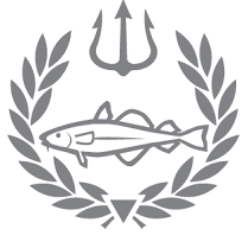Today found me up at 5:00 AM, getting ready to catch a train into Boston for a long day’s work at the New England Aquarium (NEAq). I couldn’t help but feel a strong sense of deja vu during the trip in to North Station; you see, I’d caught this exact train many times before, back when I participated in a six-month Marine Mammal internship for the aquarium. This time, however, I was not going into Boston to work with the Atlantic Harbor & Pacific Fur Seals; instead, I was going to help out with the African, Rockhopper, and Blue Penguins! Once I arrived at NEAq, I met up with Paul Leonard, a Boston Sea Rover and senior aquarist in the penguin exhibit. He introduced me to the staff and volunteers on the exhibit, and then I jumped straight into work, helping separate and weigh the fish of choice for the day — Sardines (which are quite different from the fish sold in tight little tin cans in the supermarket.) Once the buckets for each species of penguin were filled with the proper amount of fish, we all suited up in nice, thick 7mm wetsuits and prepared to go in the exhibit. Though no one was going to be diving, those 7mm suits were crucial; the water in the exhibit is filtered in straight from the adjoining Boston Harbor, at an average temperature of about 60F. Furthermore, we were planning to spend about 3 hours in that water, which ranged in depth from waist-deep to up to my neck; after the first half-hour in there I was thinking I should have brought my DUI drysuit!
However, my attention was quickly drawn away from the cold when we started to feed the penguins. Working with Paul, I kept a tally of how much fish each of the 41 African Penguins on exhibit ate. Though the African’s have distinct markings on their chest plumage, it’d be almost impossible to recognize each individual bird by sight, which is why the penguins are all tagged with colored ID bands on their wings; left for the males, and right for the females. I expected to be overwhelmed by all the colors and corresponding names, but was pleasantly surprised to find that by the end of the feeding session I could already identify a handful of the penguins. Once every African Penguin had been seen to, we put the food buckets away and pulled out hoses, disinfectant, and scrub brushes; even with a team of four or more volunteers, it takes roughly five hours of work a day to keep the exhibits clean and the penguins well fed–that means five hours in numbingly cold water, which is why I soon learned to be very grateful for the hot showers we took at lunch and again near the end of our shift. The rest of the day flew by, and before I knew it the kitchen was clean, blocks of frozen fish were set out to thaw, and wetsuits were all hung with care, ready for the next day’s set of volunteers to do it all over again. I’ll be back with the penguins later this week, but tomorrow brings a whole new set of experiences as I head up to the top floor to work with the aquarium dive team and dive into the Great Ocean Tank!
